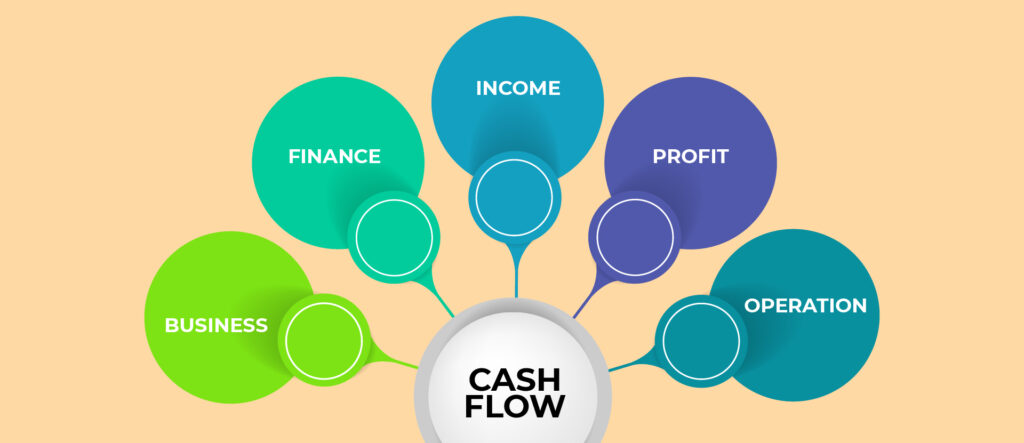Unit economics is a term that is loosely used a lot, but often startup owners do not pay much attention to it. This could be a real mistake. But what is unit economics, anyway?
In simple terms, unit economics means measuring the profitability of selling goods, products, or services. For example, suppose you are a widget-making company. In that case, your unit economics will be the relationship between the revenue you receive from selling the widget versus expenses you bear for producing, marketing, and selling the widget. If you’re a service offering company like Uber, your unit economics will be the relationship between the revenue you earn from your services (for example, one ride of one passenger) versus the cost associated with marketing and offering the service to the customer.
Unit economics considers the direct revenues and costs connected with the essential elements of a company’s business model. In other words, it can be said that with this data, one can predict how profitable or not profitable a company can be and when it can reach the profitability state. And if you care about profitability, you can’t ignore to know about unit economics.
To understand unit economics, your first task will be to understand your basic unit. It is the most fundamental thing that reflects how you operate. Once you know the basic unit, you need to do the calculation in the next step. This will tell you how much revenue you will earn and what cost you need to pay to achieve that revenue.
In this context, it is essential to know about LTV or lifetime value which denotes how much revenue you can expect to earn from a single customer account during the entire lifetime of that account with you. To calculate LTV, you need to know the gross margin, how much each customer spends every month, and your monthly churn percentage. Mathematically, it can be represented as:
Lifetime Value = Gross Margin % X (1 / Monthly Churn) X Avg. Monthly Subscription Revenue per Customer
Coming to the cost side, the most frequently used term that you should know about is customer acquisition cost or CAC. It is determined by subtracting all the costs from the total sales and marketing costs to acquire a single customer. Representing mathematically,
Cost to Acquire a Customer = Sales and Marketing Costs / New Customers Won
‘‘
If you’re spending more to acquire a customer than its lifetime value, you won't survive in the business for long.
Why Is It Essential to Understand Unit Economics?
“If you can’t measure it, you can’t improve it.” – Peter Drucker.
Understanding and determining your unit economics is extremely crucial for early-stage startups to establish a healthy growth curve. Often, startup owners are so engrossed with their product ideas that they fail to recognize the importance of product-market fit, pricing strategy, cost structure, etc. which is why many startups fail to survive their initial days. But, knowing your unit economics from an early stage can help you make long-term financial projections. And the more accurate your financial predictions are, the more accurately you can predict your revenue trajectory.

How to Calculate Unit Economics?
Before we start calculating, we need to understand what a unit is. A unit can be anything depending on your business model. But as long as you are not mixing your units, your calculation will be impactful.
Customer as a unit
If you have a subscription-based model, every subscription you sell or get a new subscriber, a subscriber (customer) can be one unit.
Units as products sold
This model is more standard for manufacturing business where there is some cost attached to manufacturing a product. However, if you are a SaaS business, then customers as a unit would be more of interest to you than units as products sold.
The easiest way to calculate unit economics is to find the revenue per customer and then divide it by the costs associated with the customer. However, remember since no two businesses are the same, how you derive those values and what you determine as a unit will largely depend upon your business model. For example, for a SaaS business model, unit economics is usually LTV divided by CAC. However, for a more accurate future prediction, you need to consider other metrics, too, as simply LTV metric might not be sufficient. If you’re a new business, a startup, or have a new product launch, using a flexible LTV calculation makes more sense. Whatever you choose, you need to divide the result by CAC to get the unit economics.
Predictive LTV
This formula helps to avoid a sudden and unexpected drop-off in sales by considering how customer preferences change over time.
Flexible LTV
The predictive LTV works better for established companies. But if you’re starting, a flexible LTV would be more helpful to you.
Why Do You Need to Track It?
Unit economics is an efficient tool to determine if the cost of acquiring a customer exceeds or not the lifetime value of a customer. If you’re spending more to acquire a customer than its lifetime value, you won’t survive in the business for long. However, there are some other benefits too of tracking your unit economics.
A tool to measure early success
This is an important metric that often gets ignored by startups. It helps you determine how much you can spend on acquisition and how much you can expect in return. In short, it is an important metric to help you gauge the financial stability and financial health of your business in the long run.
Tool to tweak your model
Unit metrics are helpful as a yardstick to measure and determine if you need to tweak your pricing model, marketing budget, sales approach, or any other parameters that can help you earn more revenues.
Efficient financial planning
By combining your unit economics with your acquisition rate, you will be in a better position to do effective financial planning for your business. So, unit economics is a measure of growth for your business.
Evaluate the changes
Unit economics enables you to evaluate the changes you make to your pricing structure, marketing budget, or any other parameter. Simply determining if sales would increase or not is not as effective as understanding the LTV to CAC ratio. If there is an unfavourable change in the ratio, you need to reconsider your tactics. Thus, it can be safe to say that unit economics helps you to make an informed business decision.
Unit Economics as a Lever of Growth
Unit economics can be considered as a lever of growth or a tool to foresee if any hindrances are coming. It is that yardstick that you can use to your benefit to determine the health of your business. Keeping track of the LTV to CAC ratio is thus very important. Because if you are spending more, your business can get into serious trouble if not intervened early.
It is also easy to predict the growth of your business using unit economics. If your LTV is higher than the CAC, you are making profit from the existing customer base. If you’re able to maintain your LTV and CAC ratio, while expanding your customer base, your business is on a growth trajectory.
While unit economics helps you perfect your business growth, it also enables you to foresee any possible failure. While there can be occasional incidents where you can bear additional expenses, you can’t afford to make it a regular affair of throwing away money just for the sake of acquiring customers. At the same time, you don’t have much business traction, if you’re not acquiring customers and if your CAC value is increasing at a fast rate reaching closer to your LTV rate. Well, a failure is almost inevitable.
When you start a business or launch a new product, you need to hit a certain amount of profit when you can break even. Determining your LTV and CAC early can give you an idea of when you would be able to hit the break even. And not just that, if your units are correct, and if you track it diligently, you will also be able to predict accurately if you are in the right direction or your business decisions need some tweaks.
‘‘
An estimated unit economics measure can help you gauge how fast and how much you can spend on the marketing budget before you run out of all the funds.
Best Practices to Keep Your Unit Accurate
Unit economics is a powerful metric to help your business grow, but it won’t be of much use if you are using all the wrong metrics or if your metrics are calculated incorrectly. If you want to predict your profitability accurately, you need to be accurate with your metrics and, if required, recalculate it often.
Here are some examples to give you a better idea
Change of price
It is easy to keep track of your LTV; however, if you have done any updates in your unit economics and forget to update your unit economic calculation, then your LTV to CAC ratio will change because your LTV will be impacted. This can mislead you as your calculations will be incorrect. So, whenever you are making changes to your pricing structure, remember to feed it back to your unit economics calculation.
Capital expenditure
When you are just starting, you need to do more expenses to see growth in your business. However, an estimated unit economics measure can help you gauge how fast and how much you can spend on the marketing budget before you run out of all the funds.
Recalculate whenever costs change
Just like pricing change can affect your LTV change, similarly, when your cost changes, your CAC gets impacted too. This means if you are not feeding back the updates in your unit economics calculations, your CAC value will be impacted. To avoid any faulty calculations, make it a habit to immediately calculate any change in the cost to your unit economics. This way, there will never be a miss, and you will always be using the most up-to-date data.
Improving your unit economics
There are two ways to improve your unit economics. The first option is to cut down your sales and marketing budget. However, this can impact the growth of your business. But at times when your CAC and LTV ratio is too out of balance, cutting down the expenditure budget is a more appropriate measure.
However, it is always desirable to improve your unit economics by increasing the LTV value. You can achieve this by optimizing your pricing and reducing churn, and ensuring the customer stays for a longer time.

The Key Takeaways
Being aware of direct revenues, best pricing and costing prices, and knowing your unit economics is a must for any early-stage startup. By knowing your unit economics depending upon your business model, early-stage startups can better understand and plan their growth trajectory. Giving importance to unit economics can help identify opportunities, take care of a healthy cash flow, and overcome some of the challenges of scaling up your business.





